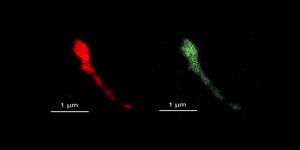
IDF Spring 2007 This morning in sunny Beijing Intel's Chief Technology Officer, Justin Rattner, showed off one of the potential future solid state memory technologies: Phase Change.
Whilst the idea itself is not wholly new, we now have an update on where it fits given that Intel is looking heavily at Flash being the future of storage and cache. Typically a Solid State Disk (SSD) will use one tenth of the power and offer potentially 10x the performance with 1000x more durability (especially in mobile situations) when compared to traditional magnetic media.
Current generation flash technology is either NOR or NAND. NOR offers bit write and erase, but is entirely unsuitable for large I/O, although you can run applications from it natively. BIOS chips, for example, are built on NOR flash.
NAND acts more like a hard drive in that it offers block write and erase but it also allows a large I/O bandwidth making it very suitable for applications like Intel’s Turbo Memory. Both, however, suffer from a limited write cycle time, which particularly affects NAND as it offers the higher I/O.
The next generation will potentially use Phase Change Flash Memory technology which offers 1+ million write cycles and bit-erase like NOR, not block-erase like NAND. Being non-volatile it allows >10 years non-volatile secure storage, providing the interface doesn’t change in the meantime.
Phase change does exactly what it says on the tin, whereby depending on which phase it's in; it offers different electrical properties that can be read as a 0 or a 1. Changing phase means it converts the necessary chemical (likely a crystal) from a solid to a liquid or vice versa if it receives an electrical stimulus.
Phase change technology has even been touted to have the opportunity to replace traditional DRAM in the future, although nothing has yet been detailed.




Best thing since sliced bread or been hyped longer than a John Romero game? Share your thoughts on Solid State technology in our forums
Whilst the idea itself is not wholly new, we now have an update on where it fits given that Intel is looking heavily at Flash being the future of storage and cache. Typically a Solid State Disk (SSD) will use one tenth of the power and offer potentially 10x the performance with 1000x more durability (especially in mobile situations) when compared to traditional magnetic media.
Current generation flash technology is either NOR or NAND. NOR offers bit write and erase, but is entirely unsuitable for large I/O, although you can run applications from it natively. BIOS chips, for example, are built on NOR flash.
NAND acts more like a hard drive in that it offers block write and erase but it also allows a large I/O bandwidth making it very suitable for applications like Intel’s Turbo Memory. Both, however, suffer from a limited write cycle time, which particularly affects NAND as it offers the higher I/O.
The next generation will potentially use Phase Change Flash Memory technology which offers 1+ million write cycles and bit-erase like NOR, not block-erase like NAND. Being non-volatile it allows >10 years non-volatile secure storage, providing the interface doesn’t change in the meantime.
Phase change does exactly what it says on the tin, whereby depending on which phase it's in; it offers different electrical properties that can be read as a 0 or a 1. Changing phase means it converts the necessary chemical (likely a crystal) from a solid to a liquid or vice versa if it receives an electrical stimulus.
Phase change technology has even been touted to have the opportunity to replace traditional DRAM in the future, although nothing has yet been detailed.




Best thing since sliced bread or been hyped longer than a John Romero game? Share your thoughts on Solid State technology in our forums

MSI MPG Velox 100R Chassis Review
October 14 2021 | 15:04








Want to comment? Please log in.